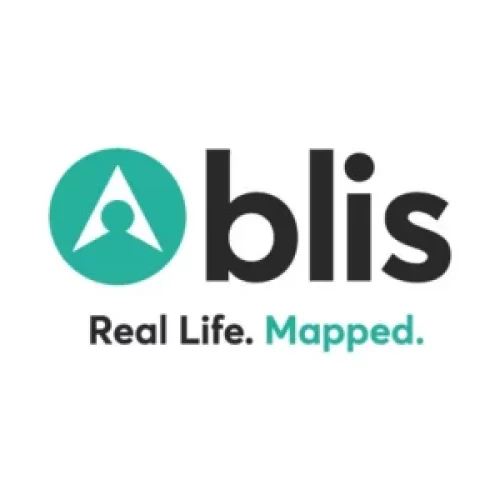“Location is the new cookie and more when it comes to targeting and engaging with audiences,” says Blis’ Amy Fox.
Location analytics platform Blis is rolling out the beta launch of Smart Trends, a new data and insights tool that allows marketers to analyze consumer behavior, from profiling to attribution, by capturing and activating mobile movement data.
Smart Trends gathers in-store consumer behavioral data and then matches it with in-store comparisons of multiple location types and brands, so that marketers can break down by demographic, contextual, time/day, and device type analysis, as well as compare behavior of user groups side by side.
Media buying shop Mediacom, which is part of WPP’s GroupM, is one of the first ad agency partners to take up Smart Trends with Blis. We checked in with Amy Fox, head of Product at Blis, and Ben Phillips, global head of Mobile at Mediacom, to get an overview of their partnership and what it means for brands.
GeoMarketing: What’s the nature of Blis’ consumer behavioral analytics within Smart Trends?
Amy Fox: Using mobile location data, Blis’ new Smart Trends tool unlocks consumer behavior insights on purchase intent, shopping patterns, and mobile consumption while shopping. Smart Trends provides in-store and inter-store brand analysis by breaking down audience demographic, contextual content, and foot traffic. This allows for side by side behavioral comparison of user groups to enable more effective campaign planning, delivery and attribution in order to deliver competitive advantage.
How does Smart Trends compare to more established behavioral analytics tools like PC-based cookies?
Amy Fox: The data feeding Smart Trends starts out as a string of otherwise arbitrary numbers, which once overlaid with the Blis Point of Interest Database becomes insight into the daily behaviors of devices in store. Smart Trends layers these snapshots of information over time to provide brands a full overview of spatio-temporal behavior– looking at how people move between the residential, recreational and retail environments.
Ben Phillips: It adds another layer of data that enables us to cross reference existing tools that are available to us and our clients. Mobile has always been able to provide vast amounts of data based around a consumer in the moment, what were now developing is how to not only understand where our audiences are now but where they have been and to enable predictive modelling for the future. Smart Trends helps us to better understand consumer journeys, attribution and engagement with digital and offline media.
If location is at the center of this tool, how do you regard the perennial question of whether “location data is the new cookie?”
Amy Fox: Location is the new cookie and more when it comes to targeting and engaging with audiences. Proximity is important but you’ve also got to look at location in a historical context. You can build up comprehensive consumer profiles looking at where their device IDs turn up– whether it’s an retail store, a hotel or a movie theater. This is vital to predicting future behavioral. It’s not about where people are, but where they’ve been and using those insights to know where they are going.
Ben Phillips: Location does afford us elements of personalization above and beyond the traditional desktop measurement solutions. Mobile has developed ways and means such as device graphs, probabilistic and deterministic ID matching and behavioral modelling to determine its audience. This goes a long way to conforming that the best solution in market are those designed for Mobile first, this approach negates a lot of the preconceived problems encountered when working with desktop platforms and methodologies and expecting them to work in a mobile world.
Location data quality from bidstream/programmatic, GPS, cell phone tower, wifi, and (to a certain extent) beacons/bluetooth IoT sources, offer varying value in terms of accuracy. What are the sources of Blis’ analytics tool and how does it deal with the questions of signal sources and accuracy?
Amy Fox: Smart Trends data is captured via movement data sources which includes GPS, wifi and beacons. Like all Blis-verified location data, it passes through our quality control technology to filter out inaccurate and fraudulent points so that we’re only working with sources we can trust.
Ben Phillips: With 50-70 percent of GPS data being inaccurate, fraud needs to be removed which unfortunately leaves the data sets at a fraction of the size with the need to be scaled up again in order to identify actionable insights. What Blis does is they use verified GPS data scaled out to public wifi, something we haven’t seen done with any other location partner.
Are there any particular kinds of clients that the new behavioral analytics tool benefits? (Retail and QSR versus automotive and banking/financial services? Or does it benefit all major categories?)
Amy Fox: The insights gained from Smart Trends are applicable to any category. Brand marketers across all verticals have access to a wealth of information on their customers, but often the data is limited to engagement with their own properties. To get a more holistic perspective of their audience – looking at aspects such as behavior with your brand in the context of competitors and in different environments – is valuable in identifying lifestyle indicators to inform brand positioning or cross-vertical partnerships that will help convert target audiences.
Ben Phillips: Many clients, not just retailers with storefronts, are using location data to measure the amount of time spent with their brand– everything from footfall attribution to cross platform engagement. Blis took us through a pilot study looking at foot traffic across the national grocery market. Obviously this is an extremely competitive sector, with promotions and store openings constantly shifting as they fight to increase shopper frequency , which ultimately impacts revenue market share at a brand level.
This passively collected data can provide insight on the actual store-to-store behavioral of shoppers with a granularity that survey data simply can’t match. As we move further away from traditional buying proxies, I predict that location data will become a broad consideration in the coming months, accounting for a large percentage of campaigns in 2018.
Click here to read the original article.


